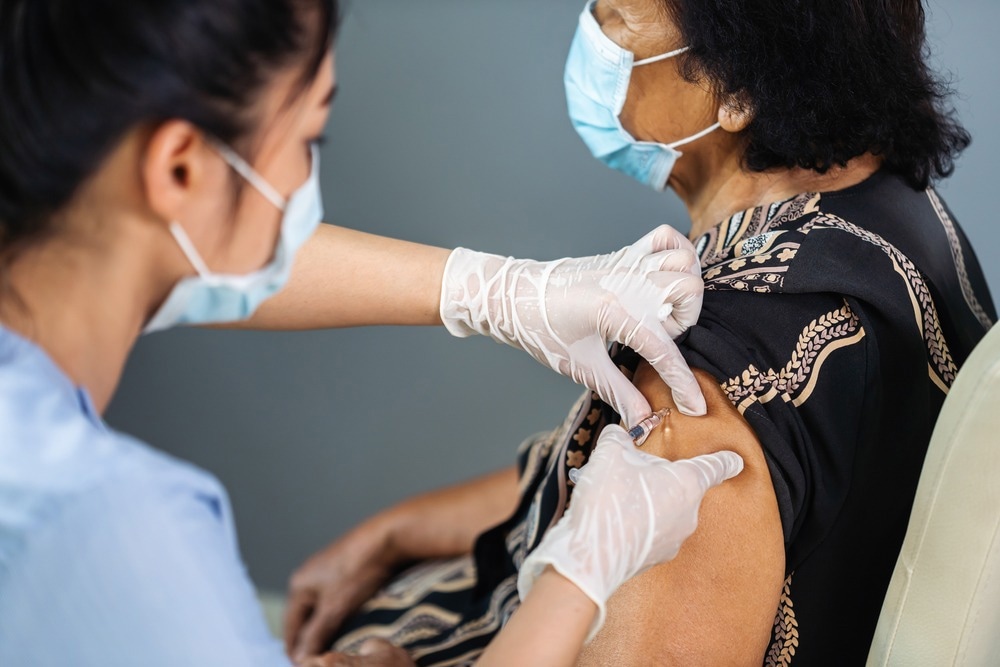In a recent study published in Nature Cardiovascular Research, researchers assessed the association between POTS (postural orthostatic tachycardia syndrome) and severe acute respiratory syndrome coronavirus 2 (SARS-CoV-2) infections and coronavirus disease 2019 (COVID-19) vaccinations.

Background
POTS is clinically diagnosed on the basis of orthostatic dizziness, pre-syncope, palpitations, and a table tilt test or 10.0-minute standing test demonstrating elevated heart rate when changing from a supine position to a standing position.
Studies have reported POTS as a potential post-acute coronavirus disease 2019 sequela (PASC). SARS-CoV-2 vaccinations elicit immune responses to the SARS-CoV-2 S (spike) glycoprotein. Thus, there exists a biological probability of comparable systemic immune responses to COVID-19 vaccinations in comparison to those induced due to SARS-CoV-2 exposure.
About the study
In the present study, researchers performed a sequence-symmetry analysis to investigate the relationship between SARS-CoV-2 vaccinations and novel POTS-associated diagnoses by evaluating the odds of POTS diagnosis 90 days before the initial vaccination/infection (background interval) vs. 90 days following the vaccination/infection (subsequent interval).
Initially, the team compared novel POTS-related diagnoses odds to the odds for myocarditis (benchmark event) and CPC (common primary care) diagnoses (referent events). Subsequently, they compared the risks of novel POTS diagnosis after COVID-19 vaccination in comparison to novel POTS diagnoses post-SARS-CoV-2 infections. Further, sex-stratified analyses were performed.
Two sequence–symmetry analyses were performed with different retrospective cohorts of individuals who received COVID-19 vaccinations and those with COVID-19 history. The study cohort individuals were identified from the Cedars-Sinai health system of Los Angeles County between 2020 and 2022. The primary and secondary cohorts comprised COVID-19 vaccinees and SARS-CoV-2-infected individuals, respectively. New POTS diagnoses within 90 days of exposure were identified based on the international classification of diseases (ICD)-9,10 codes or phecode grouping and expressed as a rate per 100,000 exposures.
The primary outcomes were the diagnosis-specific odds of a new diagnosis occurring post-exposure vs. pre-exposure and the odds of acquiring a post-exposure new POTS diagnosis vs. a new CPC diagnosis. The main analysis was repeated with the second vaccine dose as the index study exposure and using cluster bootstrapping. Logistic regression modeling was performed, and the odds ratios (OR) were calculated. Furthermore, manual adjudication of a subset of 50 events was performed.
Results
Among the post-SARS-CoV-2 vaccination cohort of 284,592 individuals, the average age was 52.0 years, 57.0% were women, and 63% were Whites. Of the vaccinees, 62%, 31%, 7.0%, and <0.10% received BNT162b2 (Pfizer-BioNTech), messenger ribonucleic acid (mRNA)-1273 (Moderna), Ad26.COV2.S (Johnson & Johnson), and other COVID-19 vaccines (ChAdOx1-S, CoronaVac, and NVX-CoV2373), respectively. Individuals with POTS-related diagnoses (n = 1,924) post-SARS-CoV-2 vaccination had similar vaccination and demographic profiles as the vaccinated population.
For COVID-19-vaccinated individuals, POTS odds were higher 90 days post-vaccination compared to those 90 days prior to vaccination. Additionally, POTS odds (1.3, n=4,526) were higher than CPC diagnoses odds (1.2, n=33,590) but lower than those for new POTS diagnoses post-COVID-19. The conditions with the highest post-SARS-CoV-2 vaccination odds of new diagnoses were POTS, dysautonomia, myocarditis, urinary tract infections, and mast cell activation syndrome. On the contrary, two POTS-related conditions, fatigue and EDS (Ehler-Danlos syndrome), showed lower odds.
Similar findings were observed after repeating the analysis and considering the second vaccination as the index vaccination. The OR value of post-vaccination diagnoses of POTS-associated conditions vs. CPC conditions was 1.1, with comparable results obtained by clustered bootstrapping. Similar results were obtained after sex stratification, except that EDS was reported rarely among men (five cases) compared to women (35 cases).
For new POTS diagnoses post-COVID-19, 12,460 SARS-CoV-2-infected individuals were analyzed, with an average age of 47.0 years, of which 50% were women and 54% were Whites. Overall, the odds of post-COVID-19 new POTS-related diagnoses (1.5, n=1004) were greater than the odds for common primary care diagnoses (1.4, n=3325). However, the odds ratio (1.1) was non-significantly higher, probably due to the low sample size. Clustered bootstrapping yielded similar OR values.
In total, 686 individuals received POTS-related diagnoses post-COVID-19 and had similar demographic profiles as the overall SARS-CoV-2 infection population. Still, their age was marginally higher (average age of 60 years, 47% were women, and 59% were Whites). Sex stratification yielded comparable findings, with marginally and non-significantly greater myocarditis cases among males, probably because of low rates of diagnoses in outpatient settings.
Among the COVID-19 vaccinees, the odds of novel POTS, myocarditis, and dysautonomia diagnoses were greater, albeit with low occurrence rates. Among SARS-CoV-2-infected individuals, the novel diagnoses odds and the corresponding occurrence rates showed increasing trends, especially for POTS, hypertension, and diabetes. For most of the conditions investigated, post-COVID-19 rates were greater than those observed post-SARS-CoV-2 vaccinations. Concerning POTS-related diagnoses, post-COVID-19 risks were 5.4-fold greater compared to the risks post-SARS-CoV-2 vaccinations.
Conclusion
Overall, the study findings showed a probable association between POTS incidence and SARS-CoV-2 vaccinations, with a 5.4-fold greater incidence of POTS post-COVID-19 than that post-SARS-CoV-2 vaccination. Further research is required to investigate post-SARS-CoV-2 vaccination POTS etiology and incidence.





